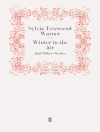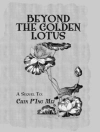In ‘Esther Happy, ‘ Honoré de Balzac delivers a poignant exploration of love, aspiration, and the socio-economic realities of 19th century France. Nestled within his expansive series of interconnected novels, ‘La Comédie Humaine, ‘ this narrative adeptly employs a blend of realism and romanticism. Balzac’s distinctive style, characterized by detailed characterizations and vivid settings, provides readers with an immersive experience, rendering the plight and desires of his characters palpable. The vibrant depiction of Esther’s tumultuous journey highlights not only her personal struggles but also the broader societal constructs that shape human relationships during this tumultuous era. Honoré de Balzac, a prolific French novelist, was deeply influenced by his own experiences with social mobility and the complexities of urban life. His keen observations of Parisian society, punctuated by a strong moral framework, drove him to create characters and stories that reflect the intricate web of human ambition and heartbreak. Balzac’s insights into women’s roles, particularly through Esther’s character, illuminate the era’s gender dynamics, greatly enriching the narrative’s depth and resonance. Readers will find ‘Esther Happy’ an essential contribution to understanding Balzac’s oeuvre and the timeless themes of love and sacrifice. This novel, blending lyrical expression with sharp social critique, invites reflection on the choices we make and the societal constraints we navigate. It is a must-read for anyone seeking to delve into the rich tapestry of human emotions and the intricacies of life in 19th century France.
Sobre o autor
Honoré de Balzac (1799–1850) was a French novelist and playwright whose work had a profound influence on nineteenth-century literature. Balzac’s magnum opus, ‘La Comédie Humaine, ‘ is a series of interconnected novels and stories that present a panorama of French life in the years after the fall of Napoleon’s empire. As a key figure in realist literature, he crafted detailed portraits of society with a depth and breadth that went beyond the works of his contemporaries. Balzac’s keen observations and incisive characterizations allowed him to construct a monument to the complexity of human behavior and social dynamics. His narrative techniques, comprising a wealth of detail and a cast of fully-realized characters, foster his exploration of themes like power, money, and social status. Though less known, ‘Esther Happy’ (also known as ‘Esther Tupin’) is among Balzac’s universe of works that lay the groundwork for the modern novel. His storytelling weaves moral ambiguity, social analysis, and psychological insight with vivid realism. Balzac’s enduring influence can be traced through the generations of writers who followed, from Marcel Proust to Charles Dickens. The depth of his character creation and the intricacy of his settings render a timeless blueprint for narrative richness, securing his legacy as a pillar of classical literature.












